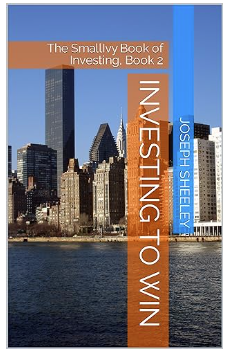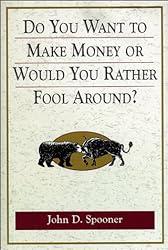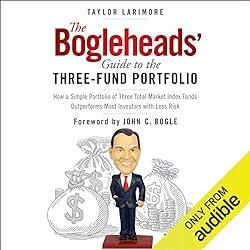
Photo by Karolina Grabowska on Pexels.com
" data-orig-size="867,1300" sizes="(max-width: 867px) 100vw, 867px" data-image-title="crop anonymous person calculating profit on smartphone calculator near banknotes" data-orig-file="https://smallivy.files.wordpress.com/2023/12/pexels-photo-4386321.jpeg" data-image-description="" data-image-meta="{"aperture":"0","credit":"","camera":"","caption":"","created_timestamp":"0","copyright":"","focal_length":"0","iso":"0","shutter_speed":"0","title":"","orientation":"0"}" width="867" data-medium-file="https://smallivy.files.wordpress.com/2023/12/pexels-photo-4386321.jpeg?w=200" data-permalink="https://smallivy.com/2023/12/09/do-you-have-a-bad-money-manager/pexels-photo-4386321/" alt="" height="1300" srcset="https://smallivy.files.wordpress.com/2023/12/pexels-photo-4386321.jpeg 867w, https://smallivy.files.wordpress.com/2023/12/pexels-photo-4386321.jpeg?w=100&h;=150 100w, https://smallivy.files.wordpress.com/2023/12/pexels-photo-4386321.jpeg?w=200&h;=300 200w, https://smallivy.files.wordpress.com/2023/12/pexels-photo-4386321.jpeg?w=768&h;=1152 768w" class="wp-image-23771" data-large-file="https://smallivy.files.wordpress.com/2023/12/pexels-photo-4386321.jpeg?w=683" />Photo by Karolina Grabowska on Pexels.comGoing through Financial Twitter, or FinTwit, I came upon a post that went something like this:
“The returns of my 401k were 16% less than the S&P 500 over the last 3 years and are trailing by several points this year. This is unacceptable. I’m going to cash it out and go elsewhere.”
At first this seems odd because most 401k plans are just investing vehicles. Once the money is there the individual has the ability to choose investments, so why leave the 401k instead of just changing investments inside the 401k?
But reading comments further, we find he is in a special arrangement where three doctors are in the plan and vote on how the money is to be managed. (There’s the first mistake: Don’t let others vote on what happens with your money. This isn’t a place for democracy.) Two of the three want the money to be actively managed with the manager choosing stocks. As long as they’re making money, they’re happy with the arrangement. The third (the author of the tweet) wants to just go into an S&P500 ETF like VOO so he could get the great returns he’s seeing in that index instead of the dismal returns he’s getting through active management (and that’s before fees are deducted). So, he keeps getting outvoted, so he’s staying actively managed.
But in this case, the active management may not be such a bad thing. He may be selling the manager short and not giving him a fair chance. His method of evaluating the manager – just comparing his returns against one popular index – may not be the best way to judge. How do you tell if your manager is doing a good job investing for you or not? Today we’ll discuss how to evaluate your money manager.
Want to learn the secrets to investing and really turbocharge your returns? Check out the second book in The Small Investor series, Investing to Win. This book presents 40 years of investing experience. Someone starting with zero knowledge of investing and the stock market could take this book and learn all that they needed to invest and do well. It would also be useful to someone who has invested and traded stocks for a while but who is really not getting the kind of returns desired.

(Note, this site contains affiliate links. As an Amazon Associate I earn from qualifying purchases. When you click on an affiliate link and buy something, The Small Investor will get a small commission for the referral. You are charged nothing extra for the purchase. This helps keep The Small Investor going and free. I don’t recommend any products I do not fully support. If you would like to help but don’t see anything you need, feel free to visit Amazon through this link and buy whatever you wish. The Small Investor will get a small commission when you do, again at no cost to you.)
When active management can work
It’s very common today to look down on active management. After all, we hear that unmanaged index mutual funds outperform actively managed funds. Plus, the fees are much less when you buy index funds. Obviously index funds, which are known as “passively managed funds” since they just buy whatever stocks are in the index they follow, have lower fees since the fund doesn’t need the research staff or to pay a manager to pick stocks. But there are times when paying a manager and supporting a research staff can be worth the cost and this could be one of those times.
This is because a set of three individuals having a portfolio managed is different than investing in a managed mutual fund. With the mutual fund, there are billions of dollars in the fund. When the manager buys or sells stocks, he needs to buy lots of shares because he has so much money to invest. If he buys too much of a given company, he will push the price up. When he wants to sell, he pushes the price down. This means he needs to spread the money out more than he would wish. So, even if he is a great stock picker, he needs to buy so many different stocks that he essentially ends up buying the market, so his performance will at best match that of the market. When you subtract off his fees and costs, the ETF will outperform him.
In this case, if he is only managing the investments for these three doctors, he wouldn’t have that much to invest even if they each have more than a million dollars invested. If he is a good manager, he then could buy just his top picks and he could outperform the markets. If he is using the picks of a group of analysts who work for his firm, however, where they have hundreds or thousands of clients and all of the clients get essentially the same stocks, you could run into the issue again of too much money being invested in the same stocks and the prices being effected.
For a whole lot more information on investing, check out The SmallIvy Books of Investing series:
This is my first book, which covers all of the details of how to invest and the risks involved in investing in different types of securities. This is the information you need to know before buying individual stocks or even mutual funds. Even more than that, it tells you what you should be doing at each stage of life to come out financially independent before you retire. Click on the book image above to learn more about it and read an exert on Amazon.

Isn’t comparing performance versus index returns the way to tell?
Obviously, the doctor who made the tweet could do as he wishes, stop investing in the 401k and/or pull his money out (with possible tax consequences), and just invest in an S&P500 fund. If he did, he would get close to the performance of the S&P500. (He would never actually match the S&P500 return because the index fund still has expenses.) But maybe the manager he has or a different one could be the better choice. How could he tell?
Well, looking at performance over a year or a few years isn’t the way to tell. Also, comparing against the S&P500, which has done better than most of the indices over the last ten years or so, isn’t the best choice. In fact, because the index has done so well, it probably means that the stocks in it are at the upper range of their prices and it may not perform that well going forward. All things go in cycles with different parts of the markets doing well at different times.

Learn to be a better investor by reading J.D. Spooner’s Do You Want to Make Money or Would You Rather Fool Around? This book made me realize that I wasn’t buying enough shares in the companies I was investing in, meaning my wins were no where near as big as they should have been.
For example, if the manager were investing mainly in foreign (non-US) stocks, he would have vastly underperformed the S&P500. But at other times in recent history, non-US stocks were on fire and the stocks in the S&P500 were garbage. Both a portfolio of only large-cap US stocks or one of large-cap non-US stocks would perform about the same over long periods of time (say, 15 to 20 years), so it wouldn’t really matter which one the manager bought.
The best course would be to buy a portfolio containing both US and Non-US stocks since then he would cover both sides and fluctuations in portfolio value would be smaller. That would also mean, however, that he would never match the performance of whichever index was doing the best at any given time. He would always be getting the average between the performance of the two. He would also miss the lows of either index, however, so in the end he would do just as well investing in both as he would investing just in either index.

Want diversification without a lot of work? Check out The Bogleheads’ Guide to the Three Fund Portfolio. Learn to build a diversified portfolio of index funds with just three funds.
What if I want to use index funds?
If you just want to get the market returns, you really don’t need a manager, certainly not an active one. Here all that you need to do is buy a set of index funds that include all of the areas of the markets you want to be invested in, given your goals and stage of life, and allocate your investment money to the different funds as a certain percentage of your portfolio. Once you’ve decided on how much of your portfolio you wish to invest in the different funds, it’s just a matter of maintaining the percentages of your investments in the different funds. This only requires you make changes a couple of times per year at most, so it doesn’t require much time.
One area where a manager can still help is in deciding on these allocations: figuring out which area of the markets you should be invested in and what percentage of your funds you should invest in each. A good manager will find out your investing goals, how long you plan to invest, how often you’ll be adding to the portfolio, and your personal tolerance for risk. He’ll then develop the portfolio allocations and find index funds that invest in the desired areas of the markets. (If you want to learn how to choose the allocations yourself or understand what the manager should be doing, Sample Mutual Fund Portfolios gives lots of information and examples of how to make allocations for different goals.)

So, how should you evaluate your manger?
So, if you do decide to go ahead and use an active manager to pick stocks instead of just buying index funds and forgetting about it, how do you tell if the manager is doing what he should? The answer isn’t to compare with any particular indices, especially over relatively short period of time. What you should do instead is understand what strategy the manager is deploying and verify that he is following the strategy.
For example, the strategy followed in Investing to Win is to find great companies with a lot of room to grow and then buy large positions and hold them for long periods of time. Rather than looking at stock price performance, we’re investing in companies as an owner and following the performance of the companies. We expect that stock price will reflect company performance if we buy and hold onto the for long enough.

We just started using PrettyLitter and are liking the results, so I became an Affilliate! PrettyLitter traps odor instantly and then eliminates moisture, so you’ll never smell your cat’s dirty business again. Easier cat care and fresh litter is just around your doorstep. No need to add baking soda for extra odor absorption. Ditch the pine pellets and upgrade to silica cat litter!
If you’re with a manager and this is the strategy you both agree he should use, you should see if he is actually following the strategy. This means he would be:
- Buying a relatively small number of companies that have a lot of room to grow and growing earnings.
- Holding onto the shares through ups and downs in price.
- Diversifying into different areas of the markets with his picks (another part of the strategy).
If you found that he was buying and selling frequently, trading on the share price changes, or that he was putting everything into one or two segments of the markets, you’d know that he was not doing as he should. If he were following the strategy, then you would know he was on track. The performance of the portfolio over any given year or two would be immaterial. It might just be that the companies chosen are not in an area that the market bid up that year or other factors influenced returns.
There are other strategies. You might decide you want to be a momentum investor and buy stocks that are going up, then try to sell before they start back down. You could also be a value investor where you seek out stocks that are out of favor and buy in, then sell when they start to become pricey. You might even decide you want to use an options strategy where you buy stocks and then write covered calls on the shares for income. Regardless of the strategy, you should understand what it is and then have your manager show you how he is following the strategy when you have meetings and performance reviews.
The wealthiest people read a lot of non-fiction books. Don’t have time to read books because of your long commute? Listen to your books in stead with Audible. Free trial at the link below.

How do you evaluate the strategy?
Now, it might be that the manager is doing exactly what he is supposed to be, but the strategy you’ve chosen just doesn’t work well. If this is the case, then you should shift strategies, not change managers. Evaluating the strategy does involve comparing to index returns (which would be the returns you’d be getting if you just bought shares in index funds) and evaluating returns against other strategies. This is what the author of the tweet was doing.
But you can’t do as he did and just pick whatever index did the best that year and compare returns. You need to look at returns over the same period of time that your strategy is designed for. The Investing to Win strategy, for example, is designed to be implemented over many years or even decades. You really can’t evaluate, therefore, until you’ve already been trying it for ten years or more. Something like momentum investing, on the other hand, is designed to have more frequent trading, so evaluating results after a few years would be justified.
You also need to evaluate against different indices. In fact, you should compare against a portfolio of indices since you would be investing in different index funds if you were using an indexing strategy, not just one. If you do this and find that the index fund portfolio did better, then you can change to a different strategy that might beat out index funds or just invest in index funds and accept market returns.
Have a burning investing question you’d like answered? Please send to [email protected] or leave in a comment.
Follow on Twitter to get news about new articles. @SmalllIvy
Disclaimer: This blog is not meant to give financial planning or tax advice. It gives general information on investment strategy, picking stocks, and generally managing money to build wealth. It is not a solicitation to buy or sell stocks or any security. Financial planning advice should be sought from a certified financial planner, which the author is not. Tax advice should be sought from a CPA. All investments involve risk and the reader as urged to consider risks carefully and seek the advice of experts if needed before investing.
